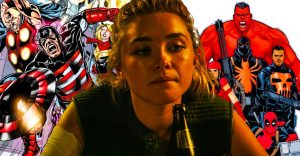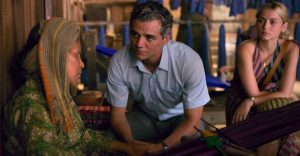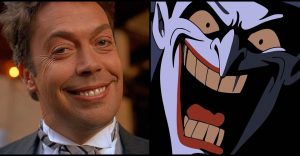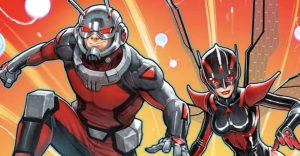20 Crazy Star Trek Concept Art Designs Better Than What We Got

For more than fifty years, Star Trek‘s talented concept artists have been introducing us to strange new worlds, new life, and new civilizations.
Star Trek‘s production teams had the massive task of creating the universe of the future. Not only did Star Trek show us what Earth and humanity would be like centuries from now, but it also took us to far-away planets home to diverse alien species.
Although audiences are now very familiar with Star Trek‘s remarkable characters and locations, they did not always look like what we know.
With a practically unlimited drawing board, concept artists toyed with many ideas for well-known parts of the series and movies, such as the Borg, the Klingons, the Enterprise, and even beloved characters like Kirk, Spock, and McCoy.
These designs were often more complex and intricate than the final product, likely changed over time by production budgets and technical requirements.
Other designs reflect parts of Star Trek we never even got to see in cut scenes or cancelled series and movies. They show a side of the franchise we never knew, the Star Trek that could have been.
With that said, here are the 20 Crazy Star Trek Concept Art Designs Better Than What We Got.
20 Borg Queen, Star Trek: First Contact

Star Trek: First Contact‘s Borg Queen had to be many things at once. She had be a menacing threat, but still a beautiful seductress within the story.
Concept artist Ricardo Delgado drew up this early design for the powerful leader of the Borg Collective.
In Delgado’s design, the Borg Queen would have looked like a cross between cyborg and ancient royalty.
The head carapace would have resembled an Egyptian queen. He intended for her to have ancient Borg text written on her mechanical body, indicating she was part of a long history of the Collective.
He also noted that the suit would look more like crystal and bone. This version of the Borg Queen would have looked equally at home leading the Borg or unearthed from a centuries-old tomb.
19 Early Alien Designs, Star Trek: TOS and TNG

The original Star Trek and The Next Generation introduced a host of aliens, brought to life by ’60s prostheses and ’80s special effects.
When these aliens were brought to the screen, they often looked quite different from their concept art.
The first piece (left) is an early concept for the M-113 creature, also known by fans as the Salt Monster. The final product resembled something like a sad fish, but this version looks straight out of Stranger Things with a more abstract face and a realistic-looking sucking mouth.
The second piece (top right) is Andrew Probart’s design for Armus, the gelatinous entity that destroyed Tasha Yar. This early art takes more advantage of his changeable shape to create a monster, a far cry from the “man dipped in tar” final version.
The last design (bottom right) is Probart’s design for the Bynars, showing them as more culturally and visually distinct.
18 Jaylah, Star Trek Beyond

Jaylah, the escaped survivor of Krall’s attacks, was the highlight of Star Trek Beyond. She survived along on Altamid by living in the crashed USS Franklin.
Her final design for the movie was similar to this concept art, but with a few marked differences.
Jaylah’s skin and hair were brightly white, whereas her concept version used more earthy tones. Her clothes are lighter, unaffected by the dark cinematography of Beyond, and the individual pieces of her outfit look more distinct from one another.
The concept design looks like character that would truly blend into the background on the grey-brown world of Altamid.
Her distinct pieces of clothing also better reflect her scrapper lifestyle, as if each piece could have been taken from a different source. This version of Jaylah seems better prepared to camouflage and survive.
17 Hall of Ancient Thought, Star Trek III: The Search for Spock

In Star Trek III, Spock is taken back to Vulcan to perform a ceremony that will restore Spock’s consciousness to his body. To do this, he is taken to the Hall of Ancient Thought, a magnificent mountain temple on Vulcan.
The interior of the hall was created and filmed, but the scene was cut for time. However, even in the filmed scene, the filmmakers did not feel that the real set did the concept art justice.
Industrial Light & Magic created this concept for the hall’s interior, making it an epic display of Vulcan culture and history.
The entire pathway on which the Vulcan procession takes place is lined with giant stone Vulcan heads. Part of the hall looks straight out of Indiana Jones, flanked by fire and incredible stonework.
If the filmmakers had been able to bring this art to life, it would have been an impressive sight.
16 Founder’s Planet, Star Trek: Deep Space Nine

Deep Space Nine brought the Changelings into the story, showing the homeworld of the shapeshifting species to which Odo belonged.
In the series, the Founder’s homeworld was a dark, orange landscape mainly focusing on the sea of the Great Link.
Before this set was created for the Changeling planet, concept artist Jim Martin drew up an intricate design that would have made a diverse alien landscape.
However, the special effects team on the series ran into difficulties making this bright, complicated landscape into a real set.
The planet also had to be shown in relative darkness so the Great Link could be seen amongst the other elements. The producers were ultimately disappointed by the final set.
Without the constraints of the special effects of the time, the Founder’s Planet might have been a more fleshed-out landscape.
15 Unused Alien, Star Trek Beyond

Star Trek Beyond kicked the franchise up a notch with interesting alien designs that the special effects team actually had the technology to pull off.
For the Yorktown Space Station, concept artists drew up some amazing and off-the-wall ideas for new aliens aboard the station.
This particular design by Phillip Boutte Jr. went unused, which seems like a terrible decision on the part of the filmmakers because it looks fantastic.
This alien design has so many intriguing elements to it that it would have raised questions about who this is and what this species is like.
Everything from the patterned skin to the sweeping cloak to the mask begs for more information about this character.
The mask may be a breathing apparatus, which would have been a good inversion of the common Star Trek logic that all the main species can breathe the same atmosphere.
14 Early DS9 Station Designs, Star Trek: Deep Space Nine

Deep Space Nine was designed as a simple, elegant gyroscope, but there were several other designs in the running. These early concepts for the station were eclectic, containing complex elements that didn’t necessarily fit together, but it looked that way for a reason.
An early idea for the station saw it as a deep-space Tower of Babel, built upon by several distinct cultures.
The different sections of the station would use the technology and style of the culture that built it.
This would create a wide variety of layouts throughout the station. Both of these designs reflect that element well, appearing as a hodge-podge made from the designs of several different architects.
This concept for Deep Space Nine might have added more depth to the station itself and increased the complications of keeping the station up and running.
13 Borg Drones, Star Trek: The Next Generation

When the production team of The Next Generation came up with the Borg, they had to settle on a design for the menacing cyborg collective.
The Borg always looked great, but they went through a variety of visual designs. In these early designs, the combination of human and machine is still there, but it is used in different ways.
The first design (left) by David Fisher includes metal pieces that extend up over the mouth. The second design (middle) smooths out the style of the mechanics so they blend in with the organic elements.
The last design (right) settled into the Borg’s usual facial structure, but had a more organic look to all of the mechanical elements.
The mask elements and the organic-like robotics of the early designs would have been excellent additions to the Borg aesthetic.
12 Enterprise Engineering, Star Trek (2009)

Star Trek‘s 2009 reboot created some gorgeous new concepts for the design of the Enterprise. The engineering section, though, was not one of those.
In the engineering sequences of Star Trek, the section does not seem to match the streamlined look of the rest of the ship.
It’s cluttered with pipes and seemingly outdated technology, but there’s a reason for that. The engine room scenes were actually filmed in a Budweiser brewery.
However, the brewery wasn’t the only idea for the Enterprise’s engine room. This concept art shows another idea for the engineering section, one that matches the sleek style of the rest of the Enterprise.
It features more high-tech engineering, such as automated parts to assist in handling engineering equipment. The warp core is the star of this art, and it would have been a magnificent sight on the big screen.
11 Klingons, Star Trek: Into Darkness

Star Trek: Into Darkness revamped the Klingons for the new Kelvin timeline, changing the way that the species was presented on screen.
The new Kelvin version was somewhere between The Next Generation and Discovery. They had different forehead ridges from their former iterations, and they tended to have shaved heads.
It was a significant change from the harsher look and the thick, flowing hair of TNG‘s Klingons.
Artist Neville Page had the task of designing and modeling the new Klingons. He went through several versions, all with different ridge designs, facial hair, and ornamentation.
This version stands out because of the use of ornamentation in the design.
It retains the Klingon’s usual hair, but braids in back in a gold plated ornamental style, supplemented by a gold nose-piece. It’s a more sensible cultural style for the Klingons that would have looked stunning in the movie.
10 Altamid, Star Trek Beyond

Star Trek Beyond focused on the Enterprise crew stranded on Altimid, a planet with diverse landscapes that was home to an advanced ancient species.
The movie featured several locations on the planet, ranging from Krall’s quarries to lush forest. When developing the planet, concept artist Victor Martinez drew up multiple designs for Altamid, most of them bright and beautiful like this one.
This design is particular intriguing, as it combines a bright, sunny planet surface with dark gateways into its subterranean structure.
Star Trek Beyond tended to lean dark in its cinematography, missing the chance to create this visually stunning landscape within the movie.
This design also looks far more alien than the final design, and it would have been interesting to explore a planet that looked vastly different from Earth.
9 Borg Obelisk, Star Trek: First Contact

For the Borg’s cinematic debut as the villains of Star Trek: First Contact, the filmmakers considered ways to make the Borg different from what we have seen before.
One idea they explored was changing the Borg’s ship designs from the classic cube. Ricardo Delgado came up with this design for the Borg Obelisk with a Borg sphere set into the top.
Delgado stated about the design, “I felt the obelisk was a natural geometric progression away from the cube, while the obvious reference to Egyptology would also make the audience wonder if this was the Borg’s first visit to Earth.”
It was scrapped when it proved difficult to present in a visually exciting way, but Delgado’s design and its implications about the Borg’s ancient history remain intriguing.
8 Crepusculan, Star Trek Discovery

Star Trek Discovery has been the first Star Trek series to hit television since advanced special effects became common. This gave them an opportunity to diversify their alien repertoire.
One of the first species they featured was the Crepusculans, a non-humanoid species native to a desert planet.
The aliens featured in the show were small creatures that went unnoticed a desert canyon. The original concept art for the species, though, appears to be a bit less subtle.
The non-humanoid species that Starfleet concerns itself with usually seem to be strikingly human-like. The final design of the Crepusculans similarly retained a human-like form.
This concept art would have been interesting within the series, as it presents the race as a beastly species.
The franchise would have had a chance to explore Starfleet’s relationship with species that would traditionally be considered animals or monsters.
7 Federation Battle Shuttle, Star Trek Beyond

Star Trek Beyond almost got creative with the Federation’s ship designs. Concept artist Victor Martinez created this design for a Federation Battle Shuttle.
According to Martinez, “It was created for an earlier version of the script, and unfortunately was cut from the final script, but perhaps influenced the enemy ‘Swarm Ships’ we do see in the final film. Both are small, dart-like fighters, ultra-maneuverable, and can carry a pilot and 2-3 passengers in a toboggan tandem style seating.”
The Battle Shuttle would have been amazing to see in action, as Star Trek has seldom delved into this kind of ship design for the Federation.
Throughout the different series, shuttle design was getting more high-tech and maneuverable.
This shuttle would have been the culmination of that build-up within the franchise. Hopefully, we’ll eventually get to see the Battle Shuttle work.
6 Chang, Star Trek VI: The Undiscovered Country

General Chang continued the grand tradition of Klingon antagonists in early Star Trek with Star Trek VI: The Undiscovered Country.
Chang was an intelligent villain out to sabotage the peace talks between the Klingons and the Federation. He was brought to life by Christopher Plummer, who wasn’t happy with the usual Klingon design.
He requested less drastic, more human makeup for Chang, and the filmmakers granted his request.
Originally, Chang was going to look like the traditional Klingon. This early design shows all the usual Klingon hallmarks, including pronounced forehead ridges and a full mane of hair.
He also appears in more grand attire, adding a regal touch to his military uniform.
This version of Chang would have been a commanding antagonist, and it would not have deviated so drastically from the Klingon’s usual design.
5 Swarm Soldier, Star Trek Beyond

Krall’s Swarm Soldiers made things difficult for Kirk and his crew throughout Star Trek Beyond. By the time they got to the screen, the swarm soldiers were high-tech metallic drones.
This drone workforce had been left behind by the previous inhabitants of the planet, the same inhabitants that left the energy transference technology that created Krall from Captain Edison.
Concept artists Alan Villanueva and Neville Page came up with this early design for swarm soldiers.
Instead of the obvious robots of the movie, these soldiers have an organic feel.
Their characteristics could easily be roboting or living tissue. This swarm soldier is a horrifying mashup of monster traits out of classic science fiction movies.
As they are not so clearly robots, they leave an unnerving question about how the original inhabitants created this workforce.
4 Recreation Room, Star Trek: Phase II

In the scrap heap of cancelled Star Trek project lies Star Trek: Phase II, the first intended sequel series for the original Star Trek. T
he series got pretty far in development before cancellation. Concept art was drawn up for the series, showcasing all the major areas of the ship.
The concept art showed off the new bridge, sickbay, the captain’s quarters, and the recreation room. While the other sets were fairly standard for Star Trek, the recreation room was a step away from the norm.
The new recreation room combines a futuristic feel with ’70s fun. It features alien plants, brightly colored spaces, and of course a nook in which to play 3D chess.
The first concept piece (top) gives a glimpse at some form of futuristic entertainment, possibly holographic, within the recreation room.
It’s a display of high-tech entertainment and fun space that makes Ten Forward boring in comparison.
3 Klingon Uniforms, Star Trek: Into Darkness

Among other changes to the Klingons for Star Trek: Into Darkness, the uniforms also needed to be redone.
The movie left behind the bright metal chest and shoulder plates of TNG‘s Klingon warriors for a simpler style. The warrior attire got a modern update, focusing on long military coats and helmets, which had never been associated with Klingons in the past.
The helmet was even made to reflect the Klingons with engraved forehead ridges.
This concept art for the Klingon warriors by Constantine Sekeris is similar to the final version, but with an interesting deviation. This uniform looks more leathery and worn, almost like something out of World War II.
The helmet seems to be made out of the same leathery material, allowing for better camouflage. The uniform is also a wartime callback, a good fit for warrior species.
2 Young Kirk, Spock, and McCoy, Star Trek: The First Adventure

Before J.J. Abrams brought us the early days of the Enterprise crew, there was the cancelled movie Star Trek: The First Adventure.
Intended to follow Star Trek V, this movie would have cast young Kirk, Spock, and McCoy in a prequel about how the three met at the Academy.
While the project was ultimately thrown out, it developed far enough to have a script and concept art.
This concept art for the movie shows the character designs for Kirk, Spock, and McCoy. Kirk is coming out of rural Iowa. reflected in his simple Americana style. Spock, a brilliant outcast who left Vulcan, is still in full Vulcan cultural attire. McCoy, a 30-year-old doctor who joined Starfleet to search for meaning, has a cowboy-type style indicating his origins in the American South.
It’s an interesting display of their early lives that would have made The First Adventure a movie to see.
1 Kruge as a Romulan, Star Trek III: The Search for Spock

Before Christopher Lloyd stepped into the part of the Klingon commander Kruge in Search for Spock, the original story would have had a Romulan antagonist.
Kruge would have been a Romulan commander that showed up in a Bird of Prey to investigate and mine the Genesis Planet only to have his crew picked off by a feral Spock.
This version of Kruge likely would have been more measured, as his main goal was not the Genesis weapon.
Romulans have largely gone underutilized in Star Trek, especially given their long backstory with the Earth-Romulan war.
A Romulan antagonist would have been an excellent utilization of those undercurrents of conflict, and he probably would have been a more believable threat than the over-the-top Klingon Kruge.
This concept art is a look at a Search for Spock, which would have taken the movie and the franchise in a vastly different direction.
—
What do you think? Would you have prefered to see these pieces of Star Trek concept art on screen? Sound off in the comments!
About The Author


















